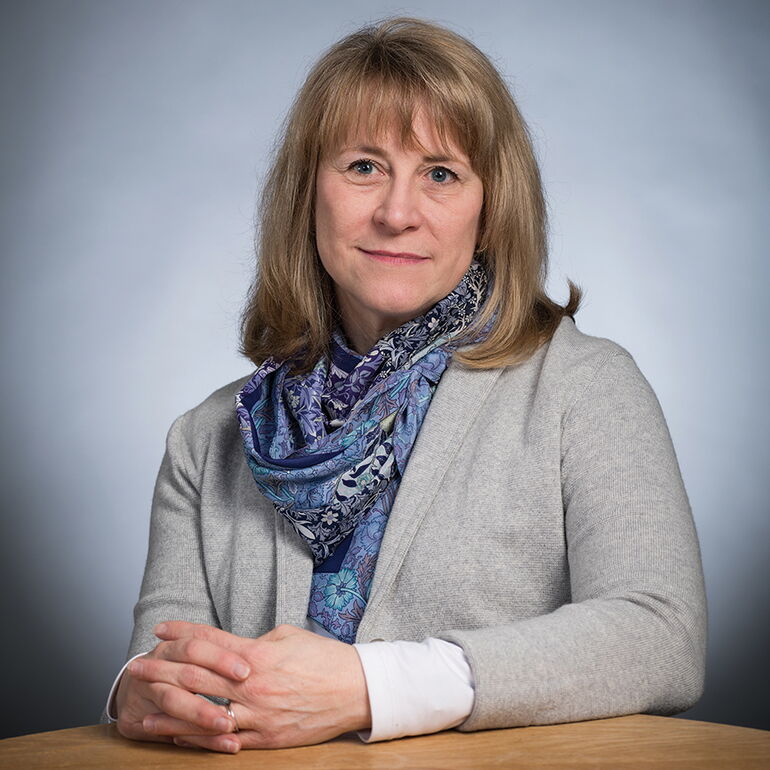Processing Your Payment
Please do not leave this page until complete. This can take a few moments.
-
News
-
Editions
-
- Lists
-
Viewpoints
-
HBJ Events
-
Event Info
- 2024 Economic Outlook Webinar Presented by: NBT Bank
- Best Places to Work in Connecticut 2024
- Top 25 Women In Business Awards 2024
- Connecticut's Family Business Awards 2024
- What's Your Story? A Small Business Giveaway 2024 Presented By: Torrington Savings Bank
- 40 Under Forty Awards 2024
- C-Suite and Lifetime Achievement Awards 2024
- Connecticut's Health Care Heroes Awards 2024
-
-
Business Calendar
-
Custom Content
- News
-
Editions
View Digital Editions
Biweekly Issues
- April 15, 2024
- April 1, 2024
- March 18, 2024
- March 4, 2024
- February 19, 2024
- February 5, 2024
- January 22, 2024
- January 8, 2024
- Dec. 11, 2023
- + More
Special Editions
- Lists
- Viewpoints
-
HBJ Events
Event Info
- View all Events
- 2024 Economic Outlook Webinar Presented by: NBT Bank
- Best Places to Work in Connecticut 2024
- Top 25 Women In Business Awards 2024
- Connecticut's Family Business Awards 2024
- What's Your Story? A Small Business Giveaway 2024 Presented By: Torrington Savings Bank
- 40 Under Forty Awards 2024
- C-Suite and Lifetime Achievement Awards 2024
- Connecticut's Health Care Heroes Awards 2024
Award Honorees
- Business Calendar
- Custom Content
As a law school CEO, Jennifer Gerarda Brown regards the ‘customers’ not just as law students, but as human beings
 PHOTO | DAVID OTTENSTEIN
Jennifer Gerarda Brown, Dean, Quinnipiac University School of Law
PHOTO | DAVID OTTENSTEIN
Jennifer Gerarda Brown, Dean, Quinnipiac University School of Law
When Quinnipiac University Law School relocated to a new building adjacent to the medical school in 2014, its dean and professor of law, Jennifer Gerarda Brown, regarded the close proximity as more than just architectural.
“The idea was to talk about law as one of the healing professions,” Brown explains. “It was really two- fold. In health law and policy, lawyers could be part of a health-care team to improve outcomes for patients, or can be part of an interdisciplinary team with other professionals.
“The second way can be through the work of lawyers in dispute resolution.”
Of course, all kinds of forces can injure people, physically and emotionally, but resolving issues with minimal strife and stress, Brown contends, can facilitate the healing “if a lawyer handles it well.”
She acknowledges her characterizing of law as a healing profession is “fairly uncommon.”
Brown, 59, was born and raised in Champaign-Urbana, Ill., where her father, a chemist, was on the University of Illinois faculty. She considered pre med, but decided to become an English major at Bryn Mawr College because she preferred reading and writing to solving math problems.
“Fundamentally, what lawyers do is read and write about texts — whether the texts are statutes, regulations, contracts or court opinions,” Brown explains. “You have to read things carefully, understand them, and clearly and persuasively advocate for a position in litigation or for a client in negotiations.”
After graduating from Bryn Mawr with an AB degree in 1982, Brown went to law school.
“I saw it as a way I could have a positive influence in the world,” she says.
Brown earned her JD at the University of Illinois College of Law in 1985 and was a law clerk for a year for Harold A. Baker, a U.S. District Court jurist for the Central District, Illinois. Then, she spent three years as litigation associate at Winston Strawn in Chicago, where she worked on “some pretty big” cases involving securities fraud and contract breaches.
“I loved being in the library, and trying to find things in cases that would help our clients,” she says. “I didn’t stay in practice very long. I figured out, even while in law school, that I ultimately might want to teach, where I could be focused on reading and writing.”
After a stint teaching legal writing as a Bigelow Fellow at the University of Chicago, Brown was promoted from assistant professor of law to associate professor at the Emory University School of Law.
It was there she met her husband, Ian Ayres, a lawyer and economist who currently is a professor at Yale Law School and Yale’s School of Management.
Brown joined the Quinnipiac Law School faculty in 1994 as an associate professor. Two years later, she was a full professor. [Over the years, Brown has taught as a visiting law professor at Harvard, Georgetown and the University of Illinois, and also served a visiting lecturer and senior research scholar at Yale Law School.]
Brown is grateful Quinnipiac University administrators gave her time to raise two children.
“When an institution or an organization makes an investment in a young parent, as they did in me, that can foster incredible loyalty to the organization,” she says. “I value that experience now, as a leader at Quinnipiac, because it helps me understand the challenges of people who work outside the home.”
In the late 1990s, Brown became the founding director of the Quinnipiac law school’s Center on Dispute Resolution.
The center was one of the first of its kind in the country, and something of a pioneer — today there are dispute-resolution programs at more than two dozen U.S. law schools.
“We’re usually ranked in the top 15 or 20,” Brown says. In the 2018 U.S. News World Report Dispute Resolution Program specialty rankings, Quinnipiac University Law School was ranked No. 14.
“My experience in directing that center taught me the value of looking for partners with complementary strengths and wanting to achieve things with us that we wouldn’t necessarily be able to achieve on our own,” Brown says. Such collaborations include the Quinnipiac-Yale Dispute Resolution Workshop, which sponsors a lecture series featuring prominent scholars and practitioners, and the Connecticut Agricultural Mediation Program, which is administered by the center and provides conflict- resolution services to the state’s agricultural and rural community.
“We also strengthened the [center’s] curriculum, and now have competition teams that go around the region,” Brown says, “providing chances in and outside the classroom to build skills in dispute resolution and problem-solving.”
Fueling a responsibility
Brown has written extensively about alternative dispute resolution, lawyers’ professional responsibilities and LGBT legal issues.
“I have family members and very close friends who are gay or lesbian,” she says, “and seeing the kind of pain they experienced, particularly because of the denial of freedom to marry the person they loved, definitely fueled a responsibility.”
Brown and her husband co-authored Straightforward: How To Mobilize Heterosexual Support for Gay Rights (Princeton University Press, 2005). She also testified before the Connecticut legislature’s Judiciary Committee about legislation pertaining to same-sex marriage, and was one of the principal authors of a friend-of-the court brief in support of the plaintiff couples in Kerrigan v. State of Connecticut, the 2008 Connecticut Supreme Court case that legalized same-sex marriage in the state.
Brown’s law review articles and book chapters include “Four Questions about Free Speech and Campus Conflict” (2018); “Sustaining the Canary in Toxic Times: Parables about Survival for Legal Education” (2016); “Deeply Contacting the Inner World of Another: Practicing Empathy in Values-Based Negotiation Role Plays” (2012); and “The Paradox and Promise of Restorative Attorney Discipline” (2012).
She has in addition served as a committee member of the Connecticut Task Force to Improve Access to Legal Counsel, is currently on the Connecticut Judicial Branch Access to Justice Commission, and has received the Hon. Robert C. Zampano Award for Excellence in Mediation and the Connecticut Women’s Education and Legal Fund award, among other accolades.
Brown became dean of the Quinnipiac School of Law in 2013. During her inaugural year she took steps to reduce an ebb in applications, which included trimming her operating budget “without affecting the quality of the legal education,” she says.
By late January 2019, law school applications were 37 percent higher than the previous year, according to Adam W. Barrett, the Quinnipiac law school’s associate vice president and dean of admissions.
“Typically the dean is the CEO, and not particularly engaged in daily business, but Jennifer continues to teach and really cares about the students,” Barrett explains. “She wants to know them personally, and wants each and every one to succeed.
“In 22 years of being involved in higher education administration,” Barrett adds, “I’ve never worked with someone with such integrity, passion and, frankly, kindness.”
Another milestone for Brown was “shepherding the transition” from the old law school building to a new building housing 13 classrooms, a 180-seat courtroom with a judge’s chambers and jury deliberation room, a legal clinic space and a moot court and mock trial room.
Marrying theory and practice
What sets Quinnipiac’s law school apart from other law schools is its emphasis on “the blend between theory and clinical practice,” according to Harry N. Mazadoorian, a distinguished professor of dispute resolutions at the school. Indeed, a majority of QU law students participate in externships or clinics.
Brown and her team have enhanced curriculum opportunities in international law, immigration rights and immigration law, enabling students to visit refugee camps in Lesbos, Greece and to participate in externships in South Africa and elsewhere.
In addition, says Brown, “We’ve focused a little more on the Bridge to Practice, with a trilogy of programs introducing students to the law firm context and legal practice.”
After their first semester of law school, students attend a Gateway to Practice program, featuring career advice from lawyers and judges.
In a second-year program, 2Ls are introduced to valuation, balance sheets and other business concepts germane to running a successful law practice.
The third part, the business of law, examines more specific subjects such as revenue streams and how to build a client base.
Mazadoorian praises Brown’s collaborative style.
“She’s very inclusive and interested in what everybody around the table has to say,” he says.
Moreover, Mazadoorian adds, “Jennifer has demonstrated leadership nationally, and has been able to mold the school into a very prominent place.”
Brown says her parents instilled in her “bedrock principles” of equality during family discussions about the civil-rights movement in the 1960s.
“I think it’s become harder to speak with people who disagree with us, and there are fewer and fewer places where we can come together and have those discussions,” Brown says. “We really have to talk to people who are different from us, with different values and different experiences, and I’m very interested in how we can have those conversations, even in a time of polarization.
“I constantly tell my students they have an important role to play.”
Brown asserts that the purpose of law school is “to educate the whole lawyer to understand and serve the whole client.
“We are trying to get students to think about the integration of their personal values and their professional values,” she says. “They shouldn’t leave their human values at the door.”
Related Content

2022 Giving Guide
This special edition informs and connects businesses with nonprofit organizations that are aligned with what they care about. Each nonprofit profile provides a crisp snapshot of the organization’s mission, goals, area of service, giving and volunteer opportunities and board leadership.
Learn more
Subscribe
Hartford Business Journal provides the top coverage of news, trends, data, politics and personalities of the area’s business community. Get the news and information you need from the award-winning writers at HBJ. Don’t miss out - subscribe today.
Subscribe
2024 Book of Lists
Delivering Vital Marketplace Content and Context to Senior Decision Makers Throughout Greater Hartford and the State ... All Year Long!
Read Here-
2022 Giving Guide
This special edition informs and connects businesses with nonprofit organizations that are aligned with what they care about. Each nonprofit profile provides a crisp snapshot of the organization’s mission, goals, area of service, giving and volunteer opportunities and board leadership.
-
Subscribe
Hartford Business Journal provides the top coverage of news, trends, data, politics and personalities of the area’s business community. Get the news and information you need from the award-winning writers at HBJ. Don’t miss out - subscribe today.
-
2024 Book of Lists
Delivering Vital Marketplace Content and Context to Senior Decision Makers Throughout Greater Hartford and the State ... All Year Long!
ABOUT
ADVERTISE
NEW ENGLAND BUSINESS MEDIA SITES
No articles left
Get access now
In order to use this feature, we need some information from you. You can also login or register for a free account.
By clicking submit you are agreeing to our cookie usage and Privacy Policy
Already have an account? Login
Already have an account? Login
Want to create an account? Register
Get access now
In order to use this feature, we need some information from you. You can also login or register for a free account.
By clicking submit you are agreeing to our cookie usage and Privacy Policy
Already have an account? Login
Already have an account? Login
Want to create an account? Register










0 Comments